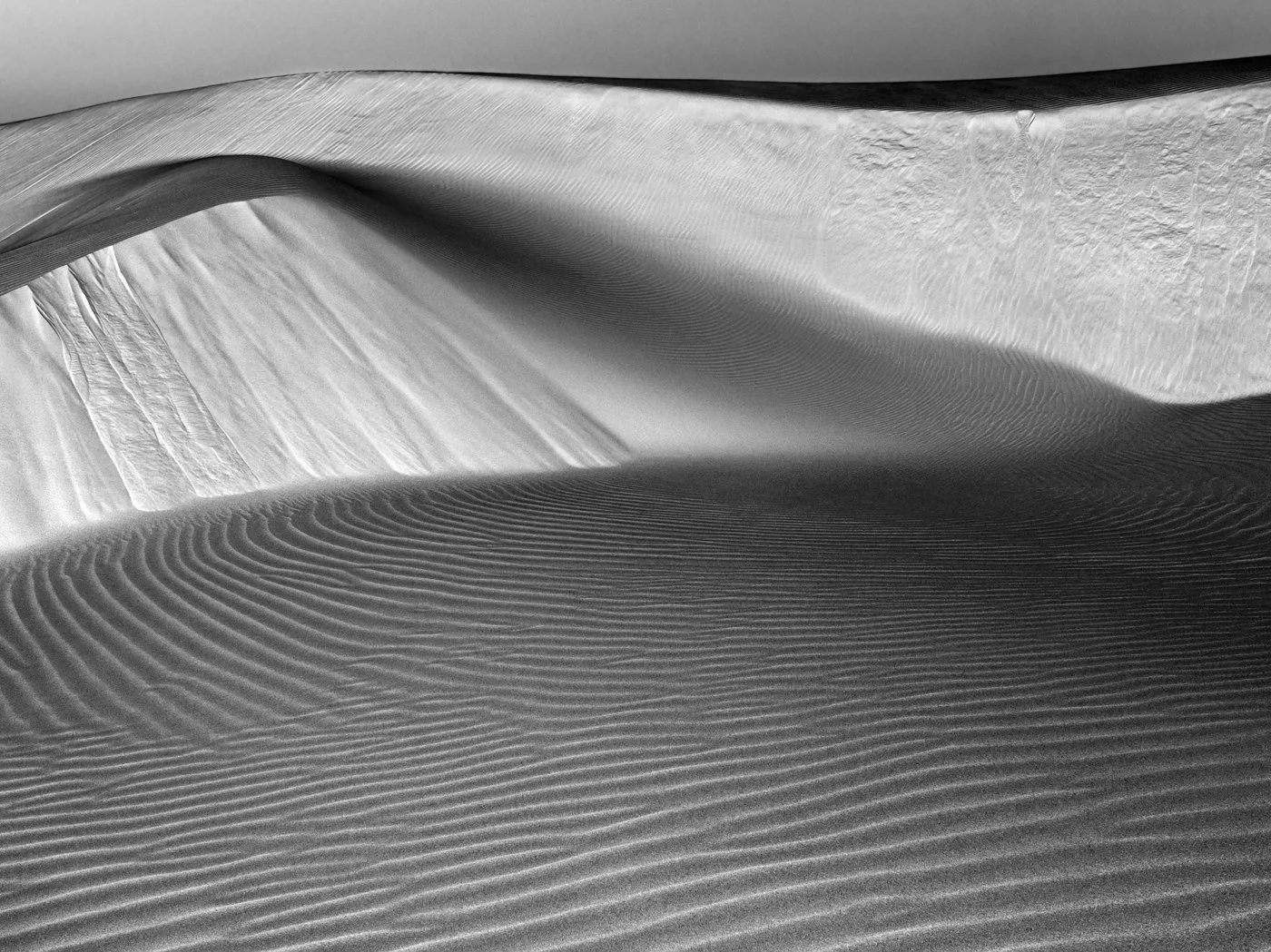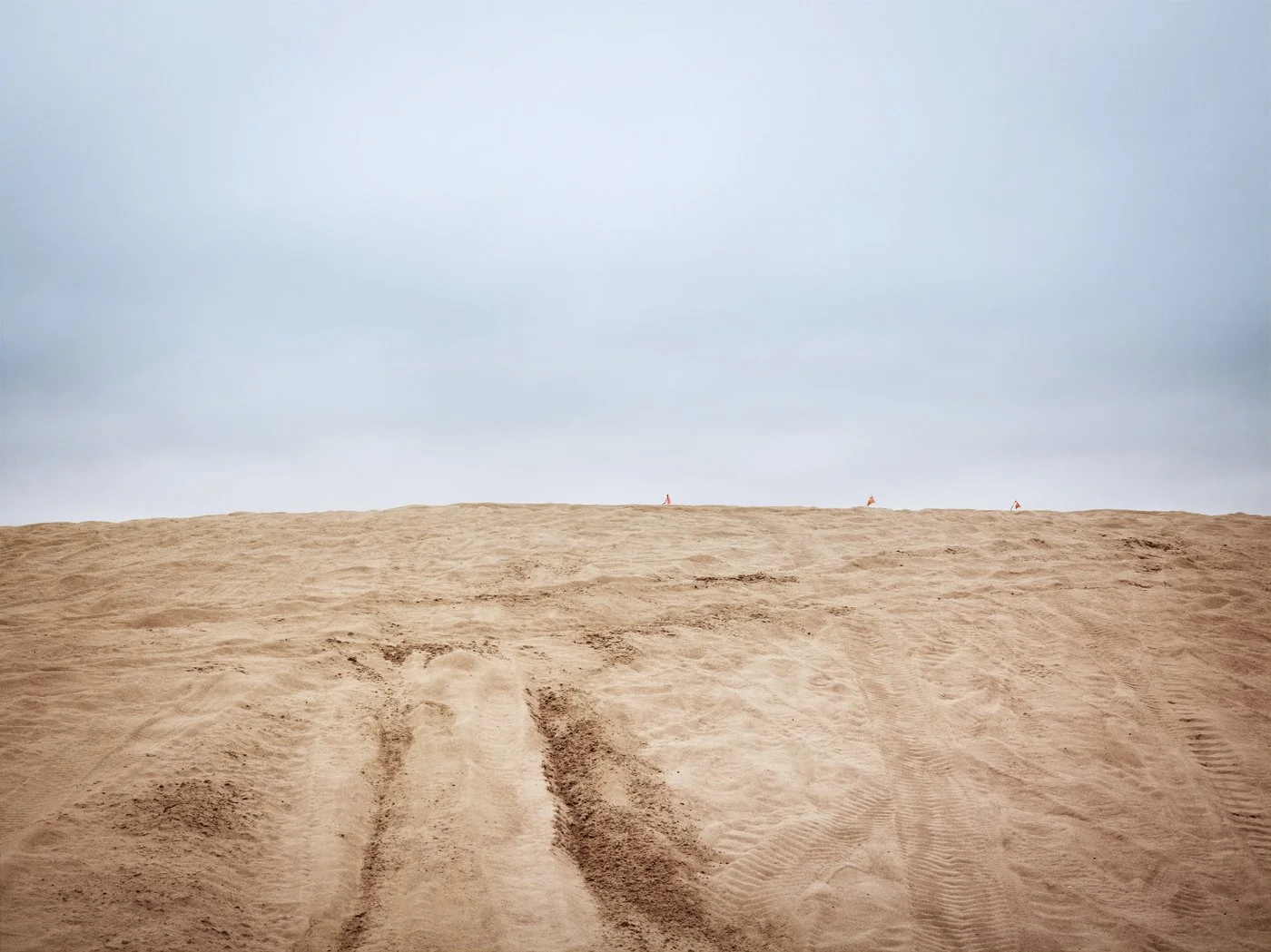




-
When a new job landed me nineteen miles from the iconic dunes of Edward Weston’s photos, I couldn’t resist a visit. Heartbreakingly, instead of encountering Weston’s breathtaking undulations of light and shadow, I found a landscape of ATVs, RVs and motorcycles. I learned that the dust created from vehicles grinding sand under their wheels every day generates some of the worst air quality in the nation, and it is sickening nearby neighborhoods, my new neighbors and their children.
These findings set off a seven-year journey of research and collaboration with the communities of Oceano and yak tityu tityu yak tiłhini Northern Chumash Tribal leadership. This was not the utopian, mythological, American West landscape I imagined. Yet this is, more profoundly, a landscape of stolen territory, exploited resources, homeless encampments, and threatened habitat. These are the histories underneath the familiar tranquil dune images that came to the surface for me.
In addition to the Modernists like Weston and the 1.5 million ATV riders who visit each year, I discovered a community of individuals called the Dunites were squatting here in dune shacks in the 1920s-40s. They started a utopian artist colony on this perceived “high vibration” site. These artists, poets, nudists, and mystics were hosts to Weston during his shooting trips. And perhaps the most surprising finding - buried in the sands of Oceano lies the Egyptian movie set from Cecil B. DeMille’s film The Ten Commandments, shot in the dunes in 1923. Parts of plaster sphinxes have been recently excavated and remarkably restored after 100 years in the sand.
Oceano - for seven generations, became a conceptual collection of histories from the Oceano Dunes, published recently as a monograph by Kehrer Verlag, that aims to destabilize the mythology of photography of the land, of the West, of California. Portraits of yak tityu tityu yak tiłhini Northern Chumash Tribal members and the riding community are co-constructed performative gestures rather than documents. Black and white dune landscapes are flipped into negatives, confusing the notion of photographic truth and challenging the male-dominated history of the genre. The use of multiple modalities of image making - referencing the Modernists, New Topographics, ethnographic typologies, and advertising – constructs meaning through the relationships created between the images.
Ultimately, Oceano aims to question the legacies of colonization, photographic history, and the politics of land use – charging this cultural landscape with significance far beyond the Oceano Dunes.
-
Oceano - for seven generations includes photography and video
Photographs: black & white and color archival pigment prints. Sizes 15x20" and 30x40". Selected images also available at 60x80" for exhibition.
Videos: several videos works including 14 minute 4K looping wall projection, VR video viewed in headset, 23 minute experimental documentary.See videos: https://lanazcaplan.com/oceano-for-seven-generations/
